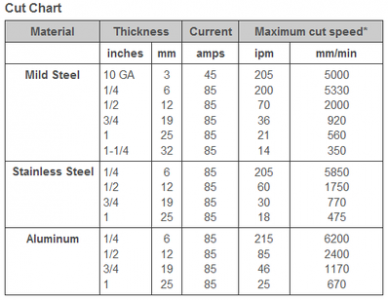- Joined
- Oct 16, 2019
- Messages
- 6,570
He stated in post a everlast 250
Whoops! I completely missed that.
My apologies
Sent from my iPhone using Tapatalk
He stated in post a everlast 250
Yours looks very close/same as my ATCP54 I bought off eBay for about $160. String is below on mine. Yours likely takes the same consumables as mine. That string also has a chart for Amps/psi for different thicknesses of steel. The chart I found recommended just 60 A/ 60 psi for 7/8" stock, so haven't hit my hose with 90 psi and checked for an aneurysm.
Bruce

Atpc54 Plasma Cutter
I’ve been watching on and off again the model ATPC54 50A plasma cutters continually sold on eBay by seller “dmssgs” out of Birmingham, MI. I have an oxyacetylene set up with a cutting torch but have wanted a plasma cutter for roughing out 16 gauge or thinner sheet steel for some projects. I...www.hobby-machinist.com
Whoops! I completely missed that.
My apologies
Sent from my iPhone using Tapatalk
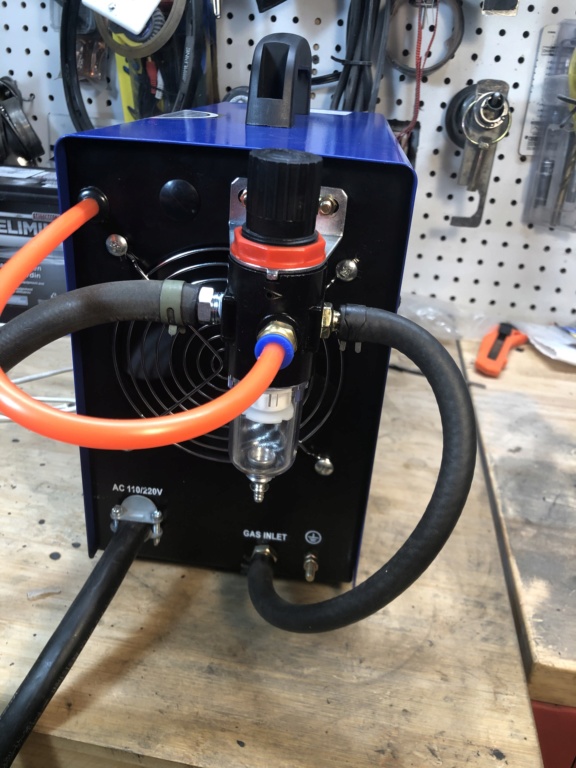
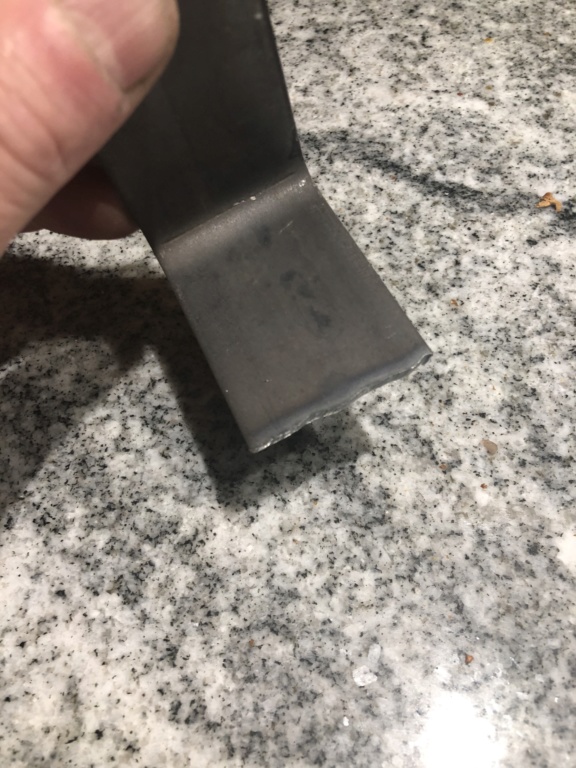
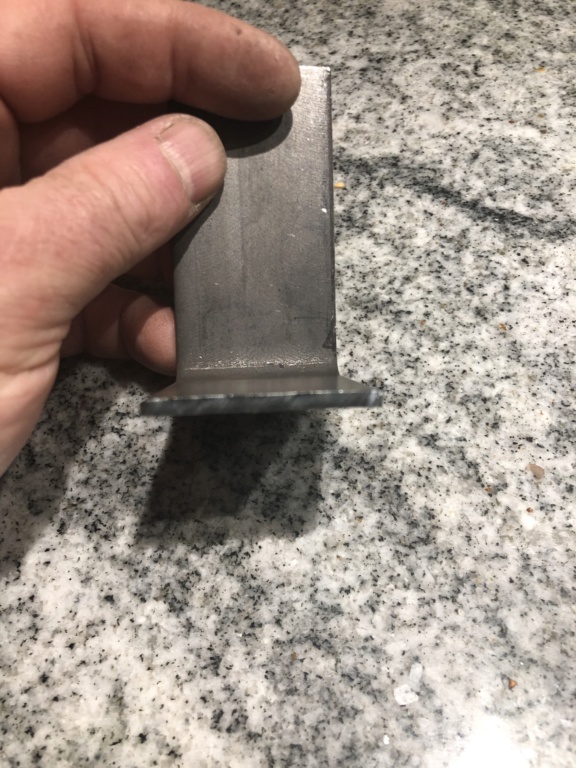
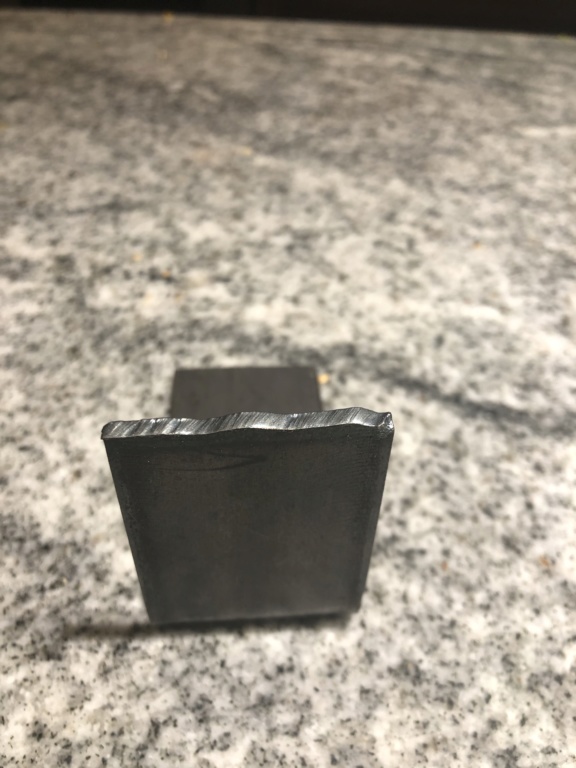
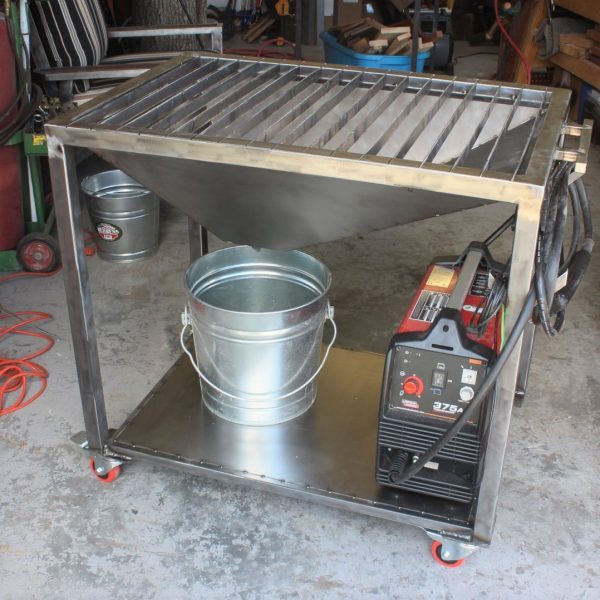
The chart didn't say so I'd be assuming it's for steel. It'll work on anything that melts and conducts electricity. Don't know if you'd have to adjust the current down for Aluminum (for example). I TIG weld aluminum or steel based on the thickness of the metal, not the composition. I was taught to start with "1000 x thickness in inches" or 125 A for 1/8" material, 250 A for 1/4". But take any advice from me on welding with a grain of salt, still need lots more experience and practice.the hose pic was actually taken with 70 psi, not 90.
I assume that chart is for mild steel?
Actually, TIG on AL is a bit different than TIG on steel.The chart didn't say so I'd be assuming it's for steel. It'll work on anything that melts and conducts electricity. Don't know if you'd have to adjust the current down for Aluminum (for example). I TIG weld aluminum or steel based on the thickness of the metal, not the composition. I was taught to start with "100 x thickness in inches" or 125 A for 1/8" material, 250 A for 1/4". But take any advice from me on welding with a grain of salt, still need lots more experience and practice.
Bruce
